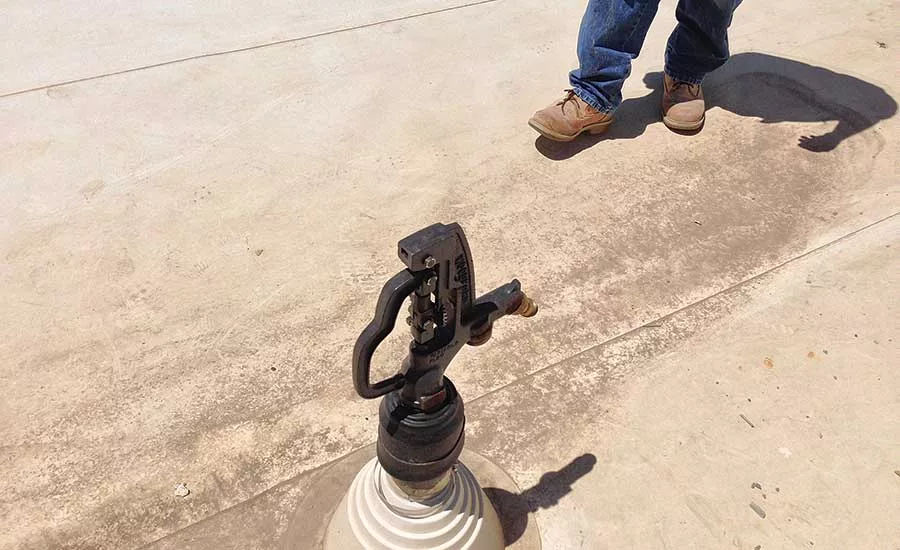Rooftop hydrants create convenience
Rooftop hydrants are a rapidly growing product market in the U.S.

Rooftop hydrants like this give workers access to water without having to haul heavy hoses up ladders, which means fewer injuries and increased worker safety. Photo credit: Woodford Mfg. Co.
Rooftop hydrants are often specified on commercial building rooftops to provide access to water, which can then be used to clean condenser coils, windows, cooling towers, green roofs and other types of rooftop equipment. Rooftop hydrants are a rapidly growing product market in the U.S. because they not only create convenience, but also cut down on injuries caused by pulling heavy hoses up ladders and onto rooftops.
When a hydrant was specified on the roof of Children’s Learning Center in Parker, Colorado, the plumbing contractor wanted a product with installation flexibility, longevity, and serviceability. But because the installation was in Colorado, hydrant freezing was a concern, and the last thing a contractor wants is a leaking hydrant on the roof.
Luckily, some rooftop hydrants, such as the Woodford RHY2-MS, feature a built-in vent that allows automatic draining. This means there is no need to drain the hydrant for freeze protection, even when there is a hose attached to the hydrant.
“This type of hydrant automatically drains when it’s shut off, so there’s no chance of the pipe bursting,” the project’s plumbing contractor says.
Many roof hydrants are designed to be easily installed by either the roofer or plumbing contractor, and many can be installed later, during the water piping process. The mounting system in many hydrants secures above and below the roof deck to provide strength and security, which is important when the hose is stretched or pulled as well as in potentially harsh rooftop weather conditions. Some roof hydrants also come with shims for pitch adjustment.
Often, repairs can be made from the top of the hydrant without requiring removal of the hydrant, and many roof hydrants are backflow-protected; for example, the RHY2-MS includes an ASSE 1052 double-check backflow preventer that is field-testable.
“They’re reliable and easy to install — the total installation time is about one hour, plus time to connect the water supply and run the drain,” the contractor says. “Once you install the hydrant, there’s no maintenance and no worry.”
Case study courtesy of Woodford Mfg. Co. For more information about the RHY2-MS hydrant or Woodford’s other products, visit www.woodfordmfg.com.
Looking for a reprint of this article?
From high-res PDFs to custom plaques, order your copy today!







